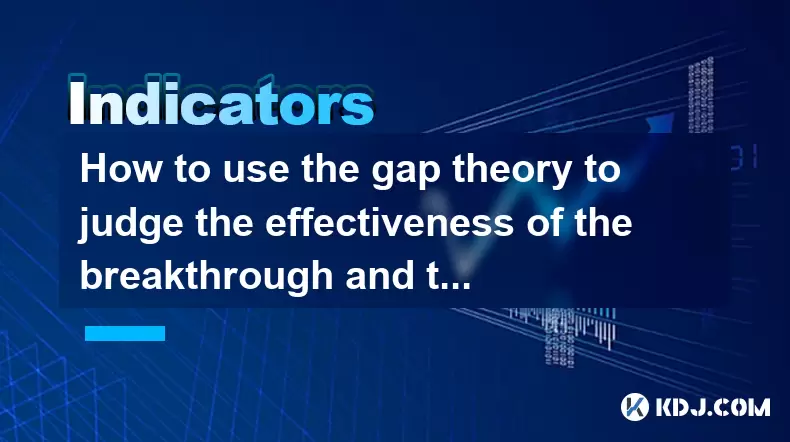-
 Bitcoin
Bitcoin $118,209.3536
1.16% -
 Ethereum
Ethereum $3,151.7546
5.98% -
 XRP
XRP $2.9277
2.35% -
 Tether USDt
Tether USDt $1.0000
0.00% -
 BNB
BNB $689.7099
1.26% -
 Solana
Solana $163.4270
1.91% -
 USDC
USDC $1.0000
0.02% -
 Dogecoin
Dogecoin $0.1983
3.74% -
 TRON
TRON $0.3008
0.51% -
 Cardano
Cardano $0.7435
2.86% -
 Hyperliquid
Hyperliquid $47.6547
-0.48% -
 Stellar
Stellar $0.4625
2.79% -
 Sui
Sui $3.9921
2.71% -
 Chainlink
Chainlink $16.0608
4.23% -
 Hedera
Hedera $0.2348
1.56% -
 Bitcoin Cash
Bitcoin Cash $496.6985
1.25% -
 Avalanche
Avalanche $21.9038
5.41% -
 UNUS SED LEO
UNUS SED LEO $8.8356
-1.88% -
 Shiba Inu
Shiba Inu $0.0...01364
5.31% -
 Toncoin
Toncoin $3.1102
4.35% -
 Litecoin
Litecoin $95.9756
3.59% -
 Polkadot
Polkadot $4.0925
5.78% -
 Monero
Monero $333.7622
-1.44% -
 Uniswap
Uniswap $9.1968
2.25% -
 Bitget Token
Bitget Token $4.6378
6.23% -
 Pepe
Pepe $0.0...01282
6.77% -
 Dai
Dai $1.0002
0.03% -
 Ethena USDe
Ethena USDe $1.0005
0.00% -
 Aave
Aave $329.9143
4.49% -
 Bittensor
Bittensor $441.4995
6.89%
How to use the gap theory to judge the effectiveness of the breakthrough and the subsequent fluctuation space?
Gap theory aids crypto traders in assessing breakout effectiveness and predicting price movements, enhancing strategies for volatile assets.
Jun 01, 2025 at 10:56 pm

The gap theory is a significant concept in technical analysis within the cryptocurrency market, which helps traders assess the effectiveness of a breakout and predict the subsequent price movement. Understanding this theory can enhance your trading strategies, especially when dealing with volatile assets like cryptocurrencies. In this article, we will explore how to use the gap theory to judge the effectiveness of a breakout and the subsequent fluctuation space in detail.
Understanding the Gap Theory
The gap theory revolves around the concept of price gaps, which occur when there is a significant difference between the closing price of one period and the opening price of the next period. These gaps can be categorized into four types: common gaps, breakaway gaps, runaway gaps, and exhaustion gaps. For the purpose of judging the effectiveness of a breakout, we will focus primarily on breakaway and runaway gaps.
Breakaway gaps often signal the beginning of a new trend, occurring when the price breaks out of a consolidation pattern or a significant resistance/support level. These gaps suggest strong momentum and can be a reliable indicator of a successful breakout.
Runaway gaps, on the other hand, occur during an ongoing trend and indicate that the trend is likely to continue. They are often seen in the middle of a strong uptrend or downtrend, reinforcing the existing momentum.
Identifying Effective Breakouts Using Gap Theory
To determine whether a breakout is effective using the gap theory, you need to look for breakaway gaps. Here's how you can do it:
Analyze the chart: Look for a clear consolidation pattern or a significant resistance/support level. The breakout should occur with a noticeable gap between the closing price of the last candle before the breakout and the opening price of the first candle after the breakout.
Volume confirmation: A breakaway gap should be accompanied by a significant increase in trading volume. High volume indicates strong market interest and reinforces the validity of the breakout.
Price action after the gap: After the gap occurs, observe the price action. If the price continues to move in the direction of the gap without filling it, it suggests a strong breakout. Conversely, if the price quickly fills the gap, it may indicate a false breakout.
Predicting Subsequent Fluctuation Space
Once you have identified an effective breakout using the gap theory, the next step is to predict the subsequent fluctuation space. Here's how you can do it:
Measure the gap size: The size of the gap can provide an initial estimate of the potential price movement. A larger gap often suggests a stronger momentum and a larger subsequent fluctuation space.
Use Fibonacci extensions: After identifying the gap, you can use Fibonacci extensions to project potential price targets. Start the Fibonacci tool from the low of the consolidation pattern to the high of the breakaway gap. Common extension levels to watch are 1.272, 1.618, and 2.618.
Monitor runaway gaps: If the trend continues after the initial breakaway gap, keep an eye out for runaway gaps. These gaps can provide further clues about the strength of the trend and the potential for additional price movement.
Practical Application of Gap Theory in Cryptocurrency Trading
Let's consider a practical example to illustrate how to apply the gap theory in cryptocurrency trading:
Scenario: You are monitoring Bitcoin (BTC) and notice a consolidation pattern between $40,000 and $42,000 over several weeks. One day, BTC closes at $42,000 and opens the next day at $44,000, creating a breakaway gap.
Analysis: You check the volume and see that it has significantly increased compared to the average volume during the consolidation period. The price continues to move upwards after the gap, confirming a strong breakout.
Prediction: You measure the gap size ($2,000) and use Fibonacci extensions to project potential price targets. Starting from the low of the consolidation pattern ($40,000) to the high of the breakaway gap ($44,000), you find that the 1.618 extension level is at $48,000. You also monitor for any runaway gaps to further assess the trend's strength.
Using Gap Theory to Manage Risk
While the gap theory can help predict potential price movements, it is crucial to use it in conjunction with risk management strategies. Here's how you can manage risk effectively:
Set stop-loss orders: Place a stop-loss order below the breakaway gap to protect against potential false breakouts. For example, if the breakaway gap occurred at $44,000, you might set a stop-loss at $43,000.
Use trailing stops: As the price moves in your favor, you can use trailing stops to lock in profits while allowing the trade to run. This can be particularly useful when monitoring for runaway gaps.
Diversify your portfolio: Don't put all your capital into one trade based on a single gap. Diversify your investments to spread risk across different assets and strategies.
Combining Gap Theory with Other Technical Indicators
To enhance your analysis, consider combining the gap theory with other technical indicators. Here are some suggestions:
Moving averages: Use moving averages to confirm the trend direction after a breakaway gap. If the price remains above a key moving average (e.g., the 50-day moving average), it reinforces the bullish breakout.
Relative Strength Index (RSI): Monitor the RSI to gauge the strength of the momentum. An RSI reading above 70 after a breakaway gap can indicate overbought conditions, suggesting a potential pullback.
MACD: The Moving Average Convergence Divergence (MACD) can help confirm the trend and potential reversals. A bullish crossover of the MACD line above the signal line after a breakaway gap can reinforce the validity of the breakout.
FAQs
Q1: Can gap theory be applied to all cryptocurrencies, or is it more effective for certain types of assets?
A1: The gap theory can be applied to all cryptocurrencies, but it is most effective for assets with higher liquidity and trading volume. Major cryptocurrencies like Bitcoin and Ethereum tend to exhibit more reliable gap patterns due to their higher market participation and liquidity.
Q2: How often should I check for gaps in the cryptocurrency market?
A2: It is advisable to check for gaps on a daily or weekly basis, depending on your trading timeframe. Daily charts can provide more immediate insights, while weekly charts can help identify longer-term trends and breakouts.
Q3: Are there any specific time frames that are better suited for using the gap theory in cryptocurrency trading?
A3: The effectiveness of the gap theory can vary across different time frames. For short-term traders, using the gap theory on 1-hour or 4-hour charts can be beneficial for capturing quick breakouts. For longer-term investors, daily or weekly charts may be more suitable for identifying significant trends and breakouts.
Q4: Can the gap theory be used in conjunction with fundamental analysis in cryptocurrency trading?
A4: Yes, the gap theory can be combined with fundamental analysis to enhance your trading decisions. While gap theory focuses on technical patterns, fundamental analysis can provide insights into the underlying factors driving the price movement, such as news events, technological developments, and market sentiment. Using both approaches can offer a more comprehensive view of the market.
Disclaimer:info@kdj.com
The information provided is not trading advice. kdj.com does not assume any responsibility for any investments made based on the information provided in this article. Cryptocurrencies are highly volatile and it is highly recommended that you invest with caution after thorough research!
If you believe that the content used on this website infringes your copyright, please contact us immediately (info@kdj.com) and we will delete it promptly.
- Crypto ROI Revolution: Is BFX the Next Big Thing?
- 2025-07-16 21:30:13
- Dogecoin, HBAR, and Partnerships: A Tale of Memes vs. Utility
- 2025-07-16 21:30:13
- Cha-Ching! That £2 Coin Could Be Worth a Mint!
- 2025-07-16 22:10:12
- Meme Coin Mania Meets Crypto Payroll & Burger Bites: A New York Minute on the Latest Trends
- 2025-07-16 22:10:13
- China Gold Market: Investment and Focus in 2025
- 2025-07-16 22:15:13
- FxWirePro: Token Unlock Tsunami – Navigating the ARBUSD Waters
- 2025-07-16 22:15:13
Related knowledge

Advanced RSI strategies for crypto
Jul 13,2025 at 11:01am
Understanding the Basics of RSI in Cryptocurrency TradingThe Relative Strength Index (RSI) is a momentum oscillator used to measure the speed and chan...

Crypto RSI for day trading
Jul 12,2025 at 11:14am
Understanding RSI in the Context of Cryptocurrency TradingThe Relative Strength Index (RSI) is a momentum oscillator used to measure the speed and cha...

Crypto RSI for scalping
Jul 12,2025 at 11:00pm
Understanding RSI in the Context of Crypto TradingThe Relative Strength Index (RSI) is a momentum oscillator widely used by traders to measure the spe...

What does an RSI of 30 mean in crypto
Jul 15,2025 at 07:07pm
Understanding RSI in Cryptocurrency TradingRelative Strength Index (RSI) is a momentum oscillator widely used in cryptocurrency trading to measure the...

What does an RSI of 70 mean in crypto
Jul 13,2025 at 06:07pm
Understanding the RSI Indicator in Cryptocurrency TradingThe Relative Strength Index (RSI) is a widely used technical analysis tool that helps traders...

Does RSI work in a bear market for crypto
Jul 16,2025 at 01:36pm
Understanding RSI in Cryptocurrency TradingThe Relative Strength Index (RSI) is a momentum oscillator used by traders to measure the speed and change ...

Advanced RSI strategies for crypto
Jul 13,2025 at 11:01am
Understanding the Basics of RSI in Cryptocurrency TradingThe Relative Strength Index (RSI) is a momentum oscillator used to measure the speed and chan...

Crypto RSI for day trading
Jul 12,2025 at 11:14am
Understanding RSI in the Context of Cryptocurrency TradingThe Relative Strength Index (RSI) is a momentum oscillator used to measure the speed and cha...

Crypto RSI for scalping
Jul 12,2025 at 11:00pm
Understanding RSI in the Context of Crypto TradingThe Relative Strength Index (RSI) is a momentum oscillator widely used by traders to measure the spe...

What does an RSI of 30 mean in crypto
Jul 15,2025 at 07:07pm
Understanding RSI in Cryptocurrency TradingRelative Strength Index (RSI) is a momentum oscillator widely used in cryptocurrency trading to measure the...

What does an RSI of 70 mean in crypto
Jul 13,2025 at 06:07pm
Understanding the RSI Indicator in Cryptocurrency TradingThe Relative Strength Index (RSI) is a widely used technical analysis tool that helps traders...

Does RSI work in a bear market for crypto
Jul 16,2025 at 01:36pm
Understanding RSI in Cryptocurrency TradingThe Relative Strength Index (RSI) is a momentum oscillator used by traders to measure the speed and change ...
See all articles

























































































